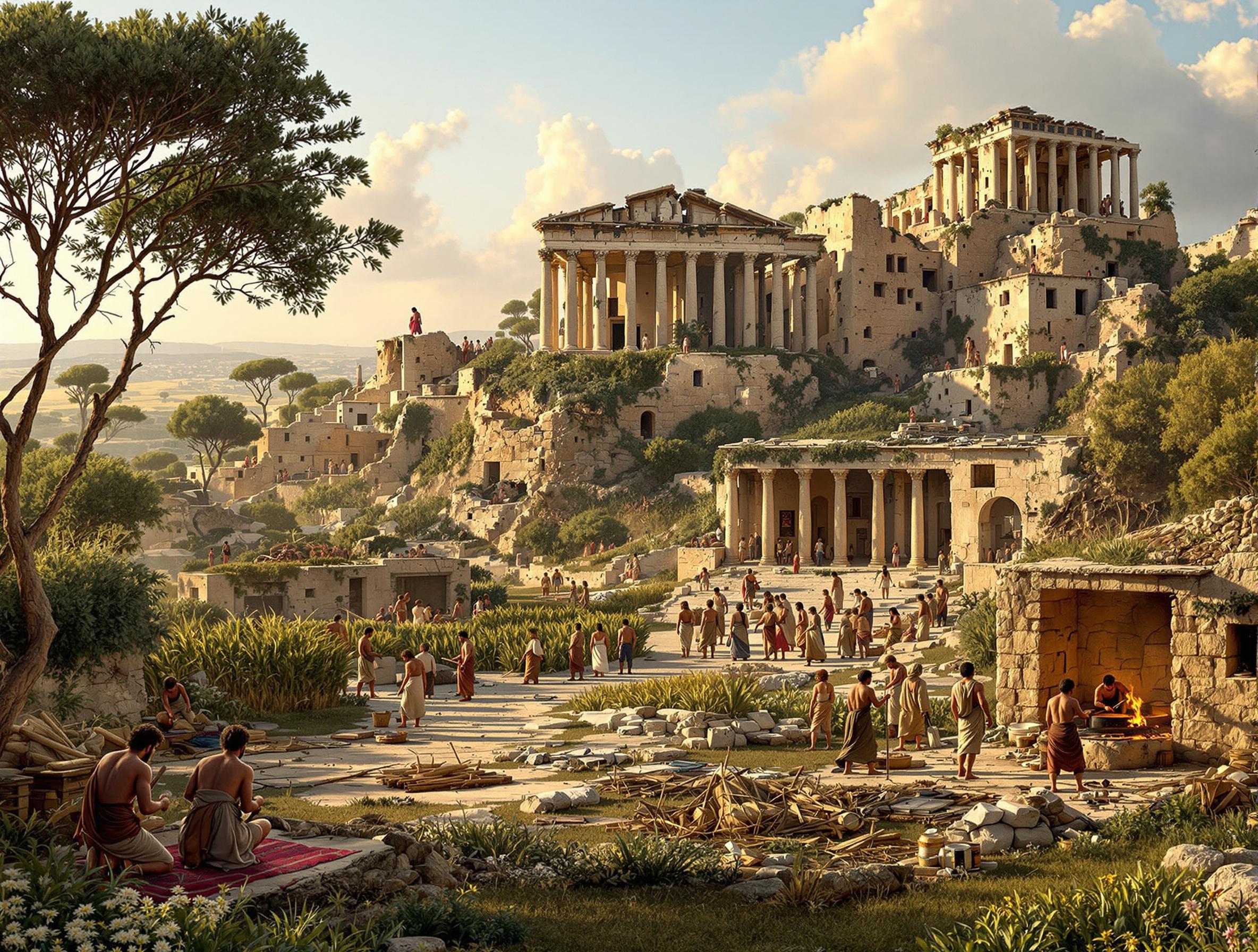The End of the Bronze Age: What They Never Told Us (Or What We Chose to Forget)
For centuries, the story of the end of the Bronze Age has been simple, even convenient: a sudden collapse around 1200–1150 BCE, blamed on an obscure mix of Sea Peoples, droughts, earthquakes, trade disruptions, and political failure. Great civilizations of the eastern Mediterranean—Mycenaeans, Hittites, Ugarit, and New Kingdom Egypt—all fell, one by one.
But is that the whole story? Or are there things that simply don’t add up?
1. The Myth of the Sea Peoples: A Convenient Enemy?
Egyptian records, especially the inscriptions of Pharaoh Ramses III, describe waves of Sea Peoples causing havoc. But there are serious issues with this narrative:
-
We don’t really know who they were. Names like Sherden, Peleset, Tjeker, and Lukka remain vague, their identities speculative.
-
There are no written records from the Sea Peoples themselves. All we have are the victors’ biased accounts—or the fragments of the fallen.
-
What if they weren’t invaders, but climate refugees or economic migrants, pushed into motion by systemic collapse?
We've been taught to see them as barbarian destroyers, but maybe they were simply a symptom of a world already breaking under its own weight.
2. Collapse or Quiet Transformation?
Doom theories describe a fiery end, but archaeological evidence paints a subtler picture. Many cities weren’t burned—just abandoned. Whole Mycenaean centers show signs of decay and desertion, not destruction.
The “slow collapse” model is gaining ground: a decline of centralized power and elite control, not of civilization itself.
It’s easier to say “everything ended” than to track a slow, complex metamorphosis that doesn’t fit heroic timelines.
3. A Story Told by Elites
Most of our historical sources come from scribes, priests, and kings. When their palace-based systems failed, so did their writing. But what about the people—farmers, craftsmen, sailors?
What if the end of the Bronze Age was not a tragedy for all, but a release? The collapse of hierarchies, of rigid trade monopolies, of constant dynastic wars?
While palaces burned, people may have started to live differently—more locally, more freely.
4. Technology and Control: The Bronze Monopoly
Bronze was power. It required tin, a rare resource, controlled by elite networks. When trade routes failed, the system collapsed.
But iron was already known. Less shiny, less prestigious—but more available. Its rise wasn’t just technological, but revolutionary: a decentralization of weapon-making and tools. A democratization of metallurgy.
The Bronze Age didn’t just collapse—it was outcompeted.
5. What If History Isn't Linear?
The rise-peak-fall cycle is a 19th-century storytelling model. But archaeology suggests something different: continuity, hybridization, resilience.
The end of the Bronze Age isn’t a void. It’s a crossroads—a moment when new stories emerged in forms that weren’t monumental or easily documented.
🔹 What We Were Told Was Convenient. But the Truth Is Messier.
Maybe we needed a clean ending to tell a new beginning. But the collapse of the Bronze Age wasn’t an apocalypse—it was a transformation, mostly invisible to the ruling classes and modern historians alike.
And maybe, in our age of crisis, this ancient transition can teach us something important: how not to collapse at all.








Leave a Comment